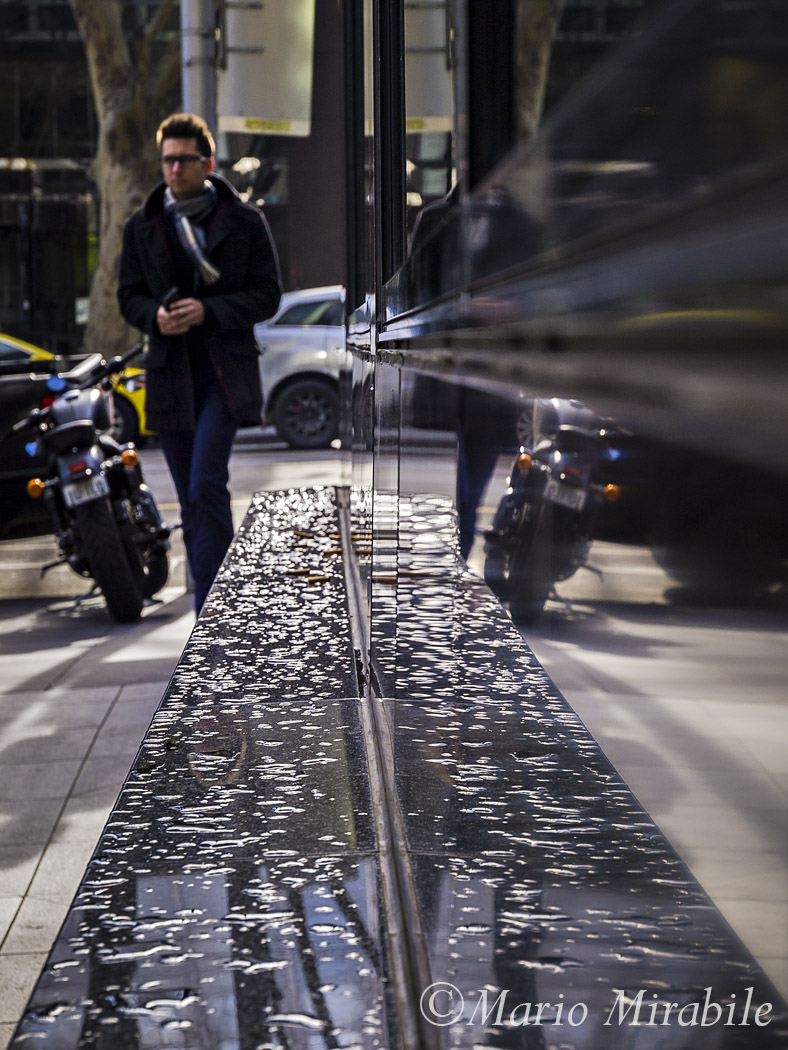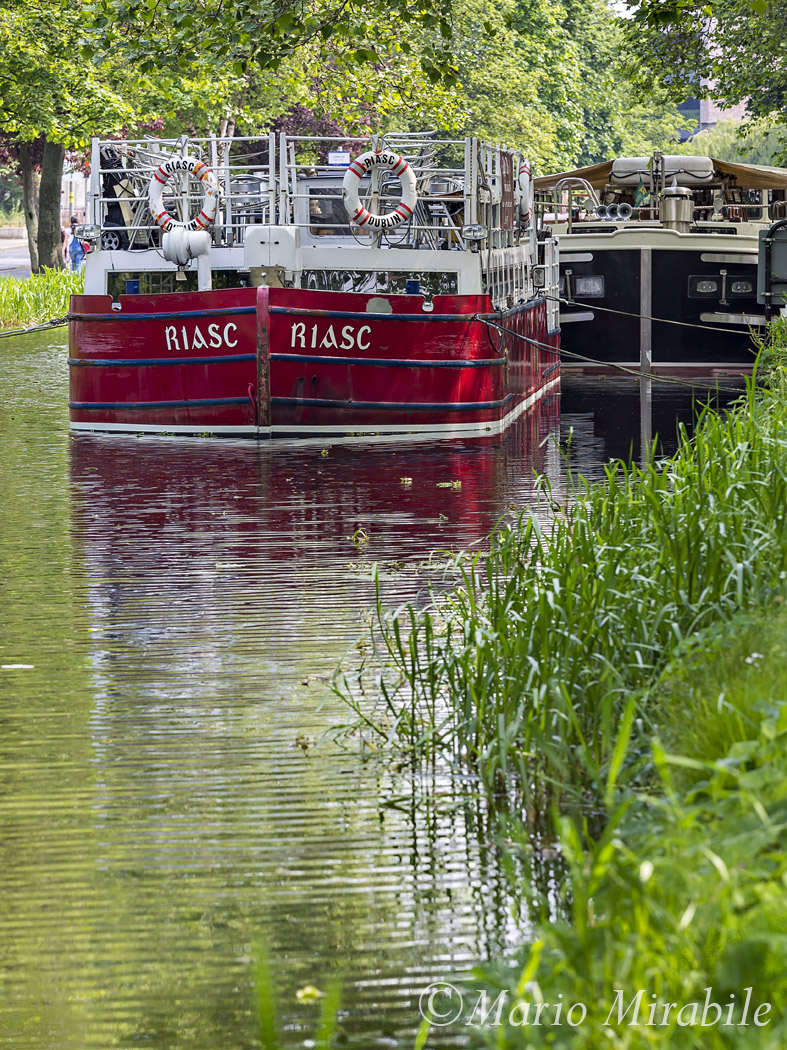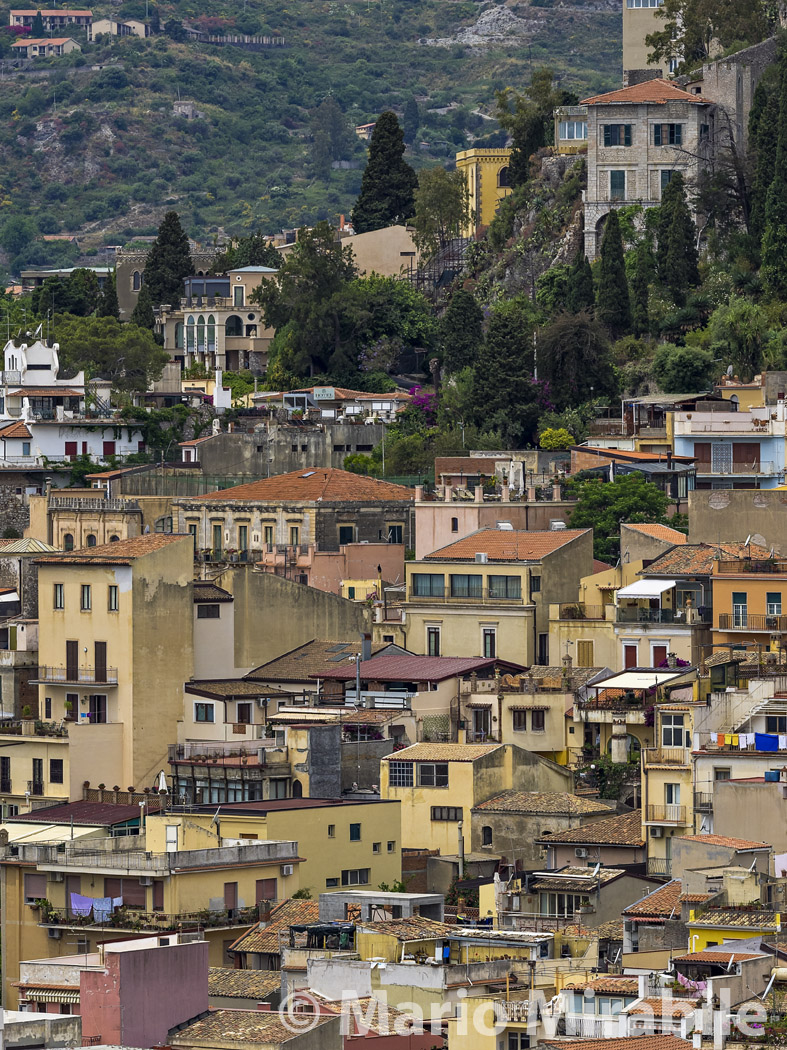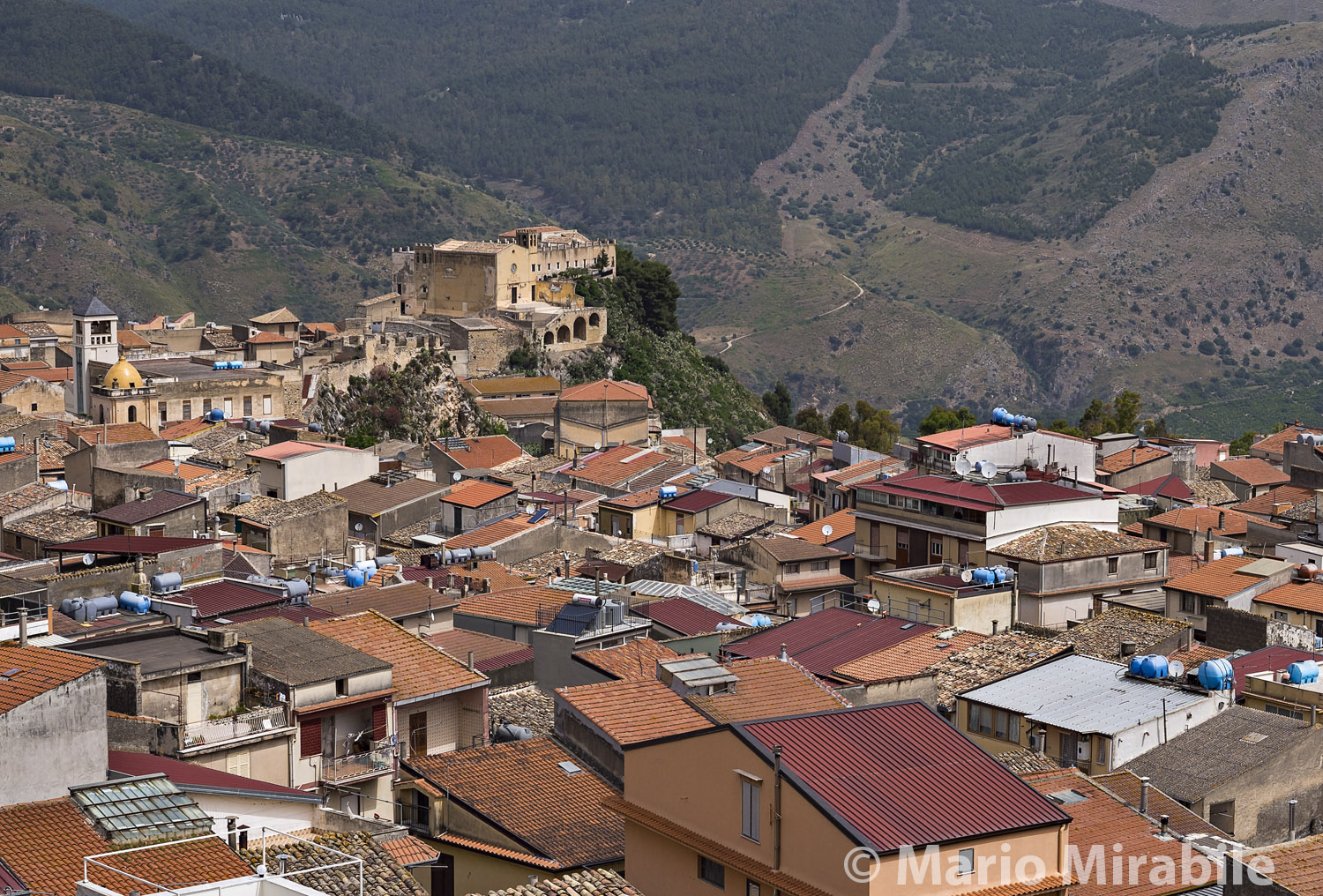I've recently noticed a couple of recurring themes (other than people of course) in my street work. The first is stairways. I suspect that something in their regularity of shape and repetition of patterns speaks to some deeply buried part of my brain. The patterns aren't enough on their own though - one or more human figures appears to be an essential part of the recipe. The theme has popped up often enough that I've decided to turn it into a sort of semi-ongoing project. It's not something I'll pursue with purpose, but I'll certainly be keeping my eyes open a bit wider for opportunities. Stairing into space, I suppose.
Walk on by /
Occasionally on my lunchtime wanderings, a scene presents itself which just cries out to be photographed. Such was the case when I spotted this bicycle propped enticingly at the corner of Ridgway Place and Little Collins Street. The colours leaped out at me despite the day being cold, wet and dreary. Mind you, it was not all good news. A large white sign on the bikes rack advertising a cafe down the lane was a visual irritant which just had to be removed. Unfortunately though, I didn't have a pair of wire cutters or knife with me to cut through the cable ties which secured it in place, so the removal had to be postponed.
The other thing the scene needed to complete it was a human figure or two. It was only a matter of time, so I set my camera and propped next to a nearby post and waited. A few passers-by obliged, but I didn't quite get the image I wanted. The bike was still there a few days later, so I expect I'll get more chances to get what I'm after. Unless, of course, the cafe changes its marketing strategy.
A breath of fresh air /
Even though I've only been home for a few weeks, the travel bug is still strong. A day trip into the country brings with it the opportunity to breathe fresh air and commune with nature. Even though it's mid-winter, the birds are out and hard hard at work - it even looks like the nest building has begun. However, to complete the picture, I think someone needs to explain the concept of "working dog" to Patch.
Winter chill /
I've been back in Melbourne for a bit over two weeks now. After five weeks overseas, it's a still a bit of a shock to the system. My sleep patterns returned to normal after a week or so, and I'm kind of back in the rhythm of going to work each day. But the cold, the damp and the short, bleak days of a Melbourne winter have me longing for warmer climes.
The other thing that's still difficult to come to terms with is my photography. After being spoilt by new and exotic places overseas, Melbourne is just too mundane and familiar. There are no gondolas on the Yarra (actually, I think there is one....), no crashing waves and towering cliffs at St. Kilda Beach and every face in the street looks familiar. But there are pictures out there, it's just a matter of hunting them down.
Irish eyes are smiling /
We've been home a little over a week now. The trip was rewarding, but exhausting, and we're still recovering to some extent. To everyone who's followed our travels via the blog, thank you and I hope you stay around for my further photographic adventures.
While in Dublin, I saw a singer refuse a request to perform "When Irish Eyes are Smiling" because it isn't an Irish song. It is in fact an American show tune. Whatever the origins of the song, the Irish are a delightful race, warm and hospitable and with a great sense of fun. When the Irish smile, the smile can really be seen in their eyes. So as my tribute to these wonderful folk, I leave you with a selection of smiling Irish eyes.
Wild ways /
The Wild Atlantic Way is a 2,500 kilometre touring route which winds its way along the entire west coast of Ireland. Exposed to the full fury of the North Atlantic, the coastline is rugged and wildly beautiful. The terrain encompases tranquil farmland, small sheltered bays, wide stretches of beach, pounding ocean, towering cliffs and winding mountain passes in endless profusion. There is a spellbining and constantly changing meeting of land and water around every bend in the winding roads.
We travelled only a small part in the south-west corner of Ireland. The weather was mild and the sea relatively benign, but the beauty of the area was evident, despite having to share the road with endless tour buses. It was a tiny taste which left me hungry to experience the whole of this majestic route.
Shut the door on your way out /
My first impression of Dublin was that it felt much like Melbourne, an impression based on driving from the airport through mostly newer parts of the city. Once you get closer to the older parts of town, much as you'd expect, it begins to feel distinctly different. There are still medieval remnants, but most of the great public and private buildings date from the Georgian era, and Dublin is home some of the world's great Georgian architecture.
On a smaller scale, the more affluent areas such as Ballsbridge contain a wealth of Georgian era houses. The geometric uniformity of these rows of houses is interrupted by the highly decorative and often brightly coloured doors, which serves to give each house a unique character. Even the more dilapidated doors are elegant and charming, and speak of a more genteel time. There is a popular theory that the practice originated when someone painted his door brightly to help his drunken neighbour find the right house when he staggered home, but there are too many versions of the story for it to be true. Suffice to say that they've become a distinctive and charming feature of Dublin, and almost become a tourist attraction in their own right.
Baaaaa, humbug /
There's a lot of sheep in Ireland. Outside the cities, they're everywhere you look. I suppose it's got something to do with the climate - you'd need a lot of wool to keep out the winter chill. An Aran sweater I tried one in a shop must have weighed three or four kilos. I really liked it, and it was certainly warm, but I figured there would probably be two days a year where I could wear it in Melbourne.
I'm no expert, but there seems to be more variety of breeds that in Australia, which provides more interest than endless mobs of merinos. They also like posing against all sorts of spectacular scenery, which just adds to their appeal. Irish sheep appear much more relaxed than Australian sheep. Perhaps as there's so much grass everywhere, they never need to worry about where their next meal is coming from.
250 shades of green /
Shortly after landing in Ireland, a few things became apparent to me. Firstly, Dublin airport appears much more efficient than any of the three Italian airports I experienced. I doubt anyone has ever been left standing around in a check-in queue for two and a half hours while they try locate a passenger list as happened to us in Catania. Secondly the traffic appears quite civilized, and as a bonus they drive on the correct side of the road. The experience was not too dissimilar to driving in Melbourne with far less traffic. Thirdly, Ireland is green - very, very green.
The glimpses I caught through the plane windows clearly showed why Ireland is known as the Emerald Isle. Dublin itself is pleasantly treed and grassed - it boasts Europe's largest urban park - but it's once you leave the cities that the full impact of the greenery really strikes you. The beauty is enhanced by the signs of small scale traditional farming that can still seen everywhere - fields enclosed by hedges and stone fences, small herds of sheep and cattle, and farmhouses and hamlets scattered here and there, seemingly at random. The peace and beauty belies Ireland's often troubled past - happily a distant memory for the for the most part - and I found myself constantly wanting to stop just to take it all in.
Oh, and just as I'd been told, the Guinness is better than it is in Australia.
Ciao /
We leave Italy and depart for Ireland with a final look at the the Italians. The affable and chatty fisherman who shared a name with my maternal grandfather, the gentleman quietly reading the paper on his front porch, the aspiring supermodel and the four old mates enjoying a Sunday morning argument - these are my people, the Sicilians.
Last resort /
The Sicilians were well aware of the the value of tourism far back as the 18th century. The small seaside towns of Cefalu and and Taormina had been humming along quite nicely on fishing and agriculture for millennia. But when the locals realized there was a lira to be made out of pleasant beaches and stunning scenery, the fishing boats were painted in bright colours and converted into props for painters (and later for photographers), and every second house started selling artisinal gelato.
Now, there's all manner of attractions. There's all the usual shopping opportunities, every imaginable eating experience (the traditional kebab appears to be quite popular, and we even spotted a couple of Irish pubs), and you often have to pay to lie on the beach. You can even take your life in your hands (sort of) by scaling the dizzy heights of Europe's tallest active volcano, Mt. Etna. It still fascinates me that people will choose to build, farm and live in places where history suggests is not a good idea to do so. Driving up the pleasantly wooded slopes, the landscape is intermittently scarred by lava flows from eruptions as recently as two years ago. But we got up and back safely, and were able to settle back with some traditional Italian food. Anyone for a kebab and a pint of Guiness?
The Godfather, Part IV /
Leaving Palermo for our next stop, the coastal town of Cefalu, we decided to swing inland via the town of Corleone. Corleone is, of course, the surname of the fictional Godfather of book and movie fame, and was given to him on his arrival in America by an immigration who mistook the name of his home town for his surname. The area around Palermo is apparently a hotbed of Sicilian Mafia activity, and Corleone one of the main centres. However we saw nothing untoward as we made our way through the countryside, up the steep and narrow winding roads. Corleone seemed a town like any other, although perhaps the colour of the houses and roofs seemed a little more drab. There is even a sign as you enter town which proclaims "CORLEONE: World Capital of Legality - Do Nothing Illegal".
Sicily was considered the granary of the Roman empire. The soil is fertile, but the terrain is steep and rocky, and it can't be easy to extract a living from it. For years, Sicily was characterized by extremes of wealth and poverty, and perhaps this is reflected in the more subdued color of the houses in these hill towns. Nevertheless, there is a rugged beauty in it all, and at times the towns and houses seem an almost natural part of the landscape.













































































